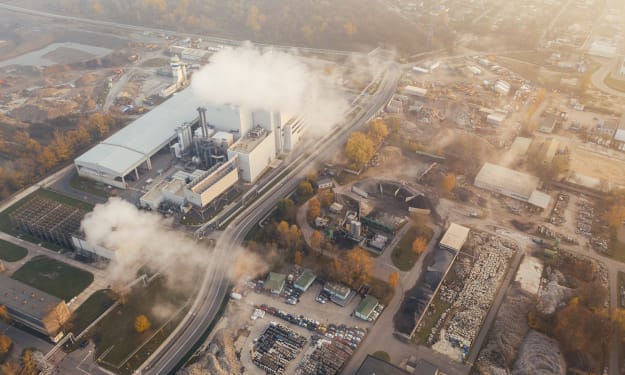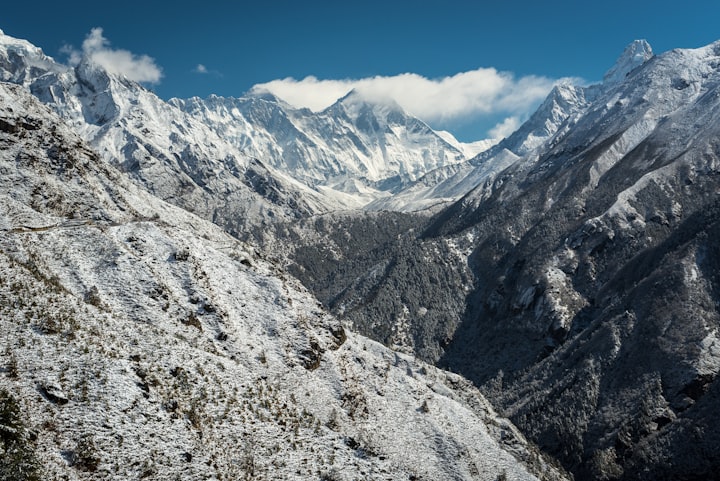
Consequences and Solutions for Climate Change
In recent decades, the specter of climate change has grown from a distant concern to a stark reality, casting a long shadow over our planet's future. The consequences of this warming trend are becoming increasingly evident, causing disruptions to ecosystems, societies, and economies around the world. However, amid these challenges, innovative solutions are emerging that offer a glimmer of hope for a sustainable and resilient future. In this article, we delve into the dire consequences of climate change and explore potential solutions that hold the promise of steering us away from the precipice.
Consequences of Climate Change
1. **Extreme Weather Events:** The fingerprints of climate change are evident in the intensification of extreme weather events. Hurricanes are becoming more powerful, heatwaves more prolonged, and rainfall more intense. Such events lead to widespread devastation, causing loss of life, infrastructure damage, and displacement of communities. The increasing frequency of these events has strained disaster response systems and underscored the need for proactive adaptation strategies.
2. **Sea Level Rise:** As global temperatures rise, polar ice caps and glaciers are melting at an accelerated pace. Additionally, the expansion of seawater due to higher temperatures contributes to sea level rise. Coastal communities are particularly vulnerable, facing erosion, flooding, and salinization of freshwater sources. The implications extend beyond the immediate coastline, with repercussions for global trade, infrastructure, and ecosystems.
3. **Biodiversity Loss:** Climate change disrupts ecosystems, pushing many species to the brink of extinction. Species that cannot adapt quickly enough face habitat loss and reduced access to essential resources. The resulting disruptions in food chains, pollination networks, and ecological balance threaten to unleash a cascade of consequences that ripple through ecosystems, impacting human livelihoods and well-being.
4. **Impacts on Agriculture:** Agriculture, the backbone of human sustenance, is profoundly impacted by climate change. Altered precipitation patterns and the increased frequency of extreme weather events lead to crop failure and reduced yields. This threatens food security, particularly in regions where agriculture is already fragile. Livestock farming also faces challenges as heat stress reduces productivity and strains available resources.
5. **Health Concerns:** Rising temperatures create conducive environments for the proliferation of disease-carrying vectors like mosquitoes. This results in the spread of diseases like malaria, dengue, and Zika to new regions. Heat-related illnesses also become more common, with vulnerable populations, including the elderly and marginalized communities, bearing the brunt of these health risks.
6. **Economic Disruptions:** The economic toll of climate change is palpable, affecting industries, businesses, and economies at large. Damages from climate-related events lead to substantial financial losses, while increased insurance claims strain the industry. Furthermore, businesses contend with supply chain disruptions due to extreme weather events, impacting production and distribution networks.
Solutions for Climate Change
1. **Transition to Renewable Energy:** The shift from fossil fuels to renewable energy sources, such as solar, wind, and hydroelectric power, is pivotal for mitigating climate change. These sources produce minimal greenhouse gas emissions and reduce our reliance on finite resources, offering a sustainable path forward.
2. **Energy Efficiency:** Enhancing energy efficiency across sectors is a crucial step in reducing carbon emissions. Upgrading infrastructure, adopting energy-efficient technologies, and promoting sustainable consumption patterns contribute to a lower carbon footprint.
3. **Reforestation and Conservation:** Reforestation efforts and the preservation of existing forests play a vital role in sequestering carbon dioxide from the atmosphere. Forests act as carbon sinks, absorbing significant amounts of carbon dioxide while also supporting biodiversity and regulating local climates.
4. **Climate-Resilient Infrastructure:** Designing infrastructure with climate change in mind can mitigate its impact. Flood-resistant buildings, natural drainage systems, and elevating vulnerable structures are strategies that enhance resilience and minimize damage from extreme weather events.
5. **Sustainable Agriculture:** Agricultural practices that prioritize sustainability can build resilience against climate change. Approaches like agroforestry, organic farming, and crop diversification improve soil health, increase crop resilience, and reduce the emissions associated with conventional agriculture.
6. **Carbon Capture and Storage (CCS):** CCS technologies capture carbon dioxide emissions from industrial processes and power plants. These captured emissions are then stored underground, preventing their release into the atmosphere and helping to curb the concentration of greenhouse gases.
7. **Global Cooperation:** International collaboration is pivotal in addressing climate change. Agreements like the Paris Agreement serve as platforms for nations to unite in their efforts to limit global temperature rise and promote sustainable development.
**Conclusion:**
The consequences of climate change are vast, touching every facet of our planet's intricate systems. While the challenges are formidable, they are met with equally powerful solutions that can alter the course of our future. By transitioning to renewable energy, enhancing energy efficiency, embracing nature-based solutions, and fostering international cooperation, humanity can chart a path away from the brink. The quest to address climate change demands a concerted effort, but the innovative spirit and collective determination of individuals, communities, and nations offer a beacon of hope in the face of adversity. As we strive for a sustainable and resilient future, the choices we make today have the potential to shape the destiny of generations to come.
About the Creator
Paul Vera
Paul Vera: Environmental writer. Passionate about Earth's beauty and conservation. Inspiring action through impactful words. 🌎📚 #EnvironmentalAdvocate
Reader insights
Nice work
Very well written. Keep up the good work!
Top insight
Expert insights and opinions
Arguments were carefully researched and presented






Comments (1)
Very well written keep the good work.
This comment has been deleted